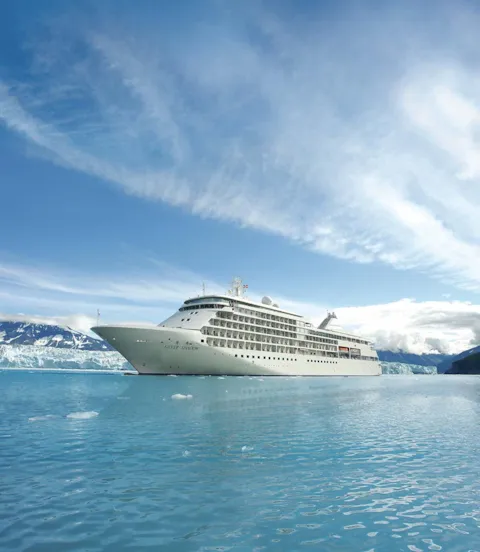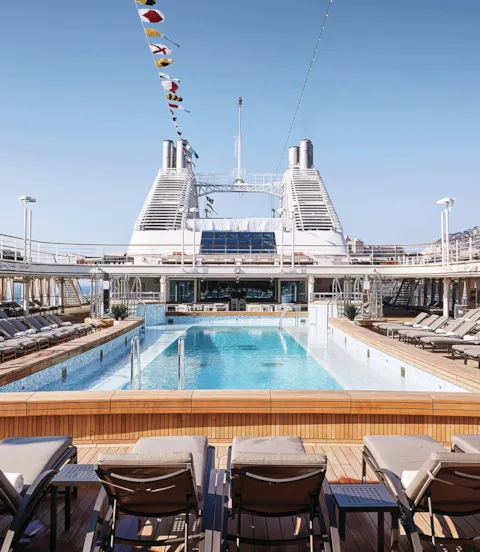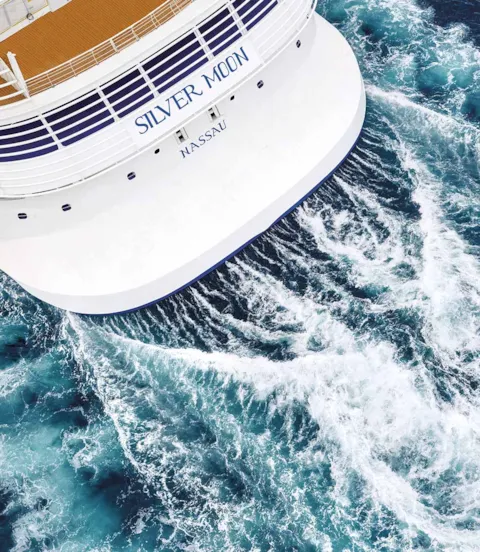How Silversea maneuvered successfully through the pandemic
Roberto Martinoli, President and CEO of Silversea Cruises, reflects on what his organization faced from the start of the pandemic, lessons learned, and how the partnership with DNV proved invaluable in getting back to their mission of providing unique travel experiences in safety, comfort and luxury.
For the cruise industry, moving a large number of people across the world, COVID-19 has been a major challenge since the start of 2020. Viruses can spread onboard, so early detection, prevention, and control is vital to protect the health of the passengers and the crew onboard, as well as the communities visited by cruise ships. In this article Silversea Cruises (Silversea) shares which measures have proven successful in resuming operations safely.

Learning from the health experts during a pandemic
"The COVID-19 pandemic is unprecedented in modern times, and the impact took nearly everyone by surprise, including the cruise industry. Our crew, and those of us working in the industry, we are not epidemiologists. We are not experts in this field, but it was essential for us to learn what was happening from the experts so we could start to understand it and take necessary actions,” Martinoli reflects.
Silversea is renowned for providing the gold standard in luxury cruising. The Monaco-based cruise line and member of Royal Caribbean Group, with their fleet of nine luxury cruise ships, manages a portfolio of itineraries spanning across all seven continents and over 900 destinations worldwide.

Bringing guests and crew home safely
In the early days, as travel restrictions went into effect and countries began closing their borders, the immediate concern was to ensure the safety of the people – passengers, crew and office personnel. This experience was “an incredible story,”, given the global nature of Silversea’s operations and the swiftness with which travel restrictions went into effect, and the rigidity of their nature.
Attention turned to the remaining vessels with passengers on board. “We had one ship in Chile and another in Brazil, and on board each were passengers from all over the world, in addition to our staff and crew. With the number of countries and the different authorities involved, it was extremely difficult to repatriate so many people,” Martinoli recalls.
“We were interfacing with many authorities and representatives from different countries. Each coutry had its own requirements, and they were all busy dealing with the crisis at home. It was a desperate situation, in constant flux, with no clear solution initially. Still, with some extraordinary measures, we could take care of the passengers, keep them safe, and get them home. Once that was complete, we did our best to provide safe travel for our crew.”
With the fast-evolving situation and continued tightening of travel restrictions, Silversea ultimately determined it would mobilize its ships to return crew members home while evaluating what to do with the vessels until they returned to normal service.

Finding a shielded place for idle cruise vessels
“We thought it would be two or three months, and we’d be back in operation. Perhaps it’s good that no one knew that we’d be in the same place a year and a half later, or otherwise I’m not sure the industry would have made it,” commented Martinoli.
Silversea found a place for each vessel to hold over during the no-sail period, with most of the vessels docked in Marseille, France. “The concentration of our vessels provided us several benefits to managing the situation, and we started talking about how to face this, what we needed to do, the different procedures, protocols, and what measures needed to be put in place.”

Collaboration helped put the right measures in place
For Silversea the knowledge and expertise of DNV and the Healthy Sail Panel were vital in helping them build a mindset around how to return to operations safely. “The support we received from DNV has been extremely valuable. We were able to learn not just what needs to be done, but more importantly, the reasons why. DNV works in this domain in hospital settings, which are arguably the most challenging for infectious disease. This gives us the confidence that we are engaged with the right people and those with real-life experience. The collaboration between our organizations and the development of our plan to get vessels back in service has been positive.”
The support we received from DNV has been extremely valuable. We were able to learn not just what needs to be done, but more importantly, the reasons why.

Testing the waters during the pandemic
In 2020, Silversea was approached by the Kingdom of Saudi Arabia to charter a vessel for a private cruise along a stretch of the Saudi coastline undergoing a massive development project. The opportunity spurred intense interactions between Silversea and DNV to implement procedures and protocols and to ensure alignment with the relevant health authorities. “This cruise was the first time putting our plan – which received CIP-M (Certification of Infection Prevention and Control – Maritime) approval from DNV – to work in real life, and it was an immensely valuable experience,” Martinoli reflects.
Some days into the charter, an individual on board tested positive for COVID-19. In line with Silversea’s CIP-M-approved plan, among the immediate actions were isolating the individual and performing contract tracing on board. Unfortunately, contract tracing determined the passenger had interacted with many people on board, and for that reason the extreme measure of stopping the ship and undergoing a quarantine period was necessary.

Controlling the virus in the event of a positive case on board
“While it was not the outcome that we hoped for, we understood that we could not avoid Covid altogether. Due to the virus’s incubation period, we can’t guarantee that someone who tests negative upon boarding won’t test positive later,” Martinoli admits. “The good news is that the one case did not spread to anyone else on board. It was the proof of concept that showed us that the protocols we put in place work. While we aim to prevent the virus from getting on board, the intention is ultimately to control where we can. That is what we learned with the help of DNV – when you do things right, you can implement measures to control the situation and prevent the infection from getting out of control.”
Silversea has sailed 15 cruises since restarting its operations, with an average of 200 people on board. Of those roughly 3,000 passengers and crew who were tested before, during and after their voyage, only one positive Covid case remains recorded. “This is evidence demonstrating that cruise ships can be safe. They may even be the safest public environment that you can think of because of all the safety measures that are in place,” Martinoli adds.
Safeguarding the health and safety of their guests, crew and the communities they visit is a top priority for Silversea. “This experience reminded us just how important it is to be faithful to and make sure that we treat our guests, our crew and our destinations in the safest possible way,” said Martinoli.

Which gaps need to be filled to be better prepared in the future?
There were undoubtedly lessons learned during the pandemic. The lack of standard policies globally created an undue burden on the industry. “There must be standardization in the rules and regulations for us to be more effective. Every country having its own interpretation and taking its own approach creates confusion and does not work for everyone. I hope that when we are through this, we can come together at a global level and discuss what measures can be aligned to improve the handling of the next crisis of similar proportion.”
There is a need for contingency planning and of being prepared and ready to adapt to unforeseen and unexpected challenges. “We need to be prepared for whatever might come. Like the saying, expect the worst while maintaining hope for the best,” Martinoli comments.

Resiliency of the cruise industry has been proven
The resiliency of the industry was undoubtedly put to the test by the pandemic. “If there are sceptics with regards to whether the cruise industry can survive being hit with a big blow, I think this would give them an answer,” Martinoli remarks. “This has been perhaps one of the most trying, if not the most trying thing of our time, and I believe that the industry has emerged stronger.”
Undoubtedly, the most valuable lesson from the pandemic was the value of partnering with knowledgeable and experienced experts. “The pandemic was something we didn’t know how to combat and beyond our comprehension at first, but the outcome was positive because we partnered with those who have the domain knowledge and experience,” Martinoli summarizes. “All indications show that we’re doing things right. We have the right plans in place. We are working with the right people to make the decisions that are going to put us in the best position for the future and give us the ability to make the most of the opportunities that lie ahead of us.”

- Silversea Cruises
- Silversea Cruises
- Silversea Cruises/Fiippo Vinardi
